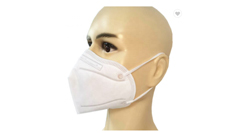What To Know About KN95 Face Masks
What is the difference between KN95 and N95 masks?
In theory, they are very similar. Both can filter out most of the small particles and can also breathe. However, some states, hospitals, and other users in the United States have reported that the KN95 masks they have ordered to prevent the new coronavirus in recent months have quality problems. Tests on KN95 masks have shown that many masks cannot meet basic filtration standards.
KN95 masks usually use rings around the ears, while N95 masks use elastic bands that stretch around the head. Public health officials say that these hairbands are safer and allow masks to block the virus more effectively.
Why should you wear a mask?
Public health officials stated that any type of mask, even the most basic face mask, is a simple way to slow down or stop using it.
N95 and KN95 masks are designed to protect the wearer. However, due to concerns about the quality of some KN95 masks, some national agencies have begun to use them interchangeably with simpler masks, the latter mainly to prevent the spread of the virus. Public health officials have requested that N95 masks be kept for medical staff, which are still in short supply.
Who made the mask for you?
The name of the manufacturer is usually written on the packaging of the mask, on the paper attached to the mask, or printed on the mask itself. You can also look for the "Owner Operator" number on the packaging. The brand name on the mask may be different from its actual manufacturer.
Mask manufacturers are listed in a searchable database on the US Food and Drug Administration website. kn95 has been included in the database, but this does not mean that this mask is approved for safe use.
How do I know that my KN95 mask is of good quality?
The main regulatory agency for respiratory protection products in the United States, the National Institute for Occupational Safety and Health, has tested more than 200 brands of KN95 masks.
The FDA also listed a list of mask models that are urgently approved for medical use. The list is updated regularly.
How to deal with KN95 masks?
According to the CDC's crisis care standards, the recommendations for handling disinfection masks are as follows:
Before and after touching or adjusting the breathing mask, clean your hands with soap and water, and disinfect them with an alcohol-based disinfectant with an alcohol content of not less than 60%.
Avoid touching the inside of the mask.
When touching or adjusting the mask, be sure to wear clean (unsterilized) gloves.
Frequently inspect the breathing mask visually to see if its components and accessories are damaged.
Be sure to check the mask components, such as the nose bridge, noseband, and nasal foam material for degradation (this will affect the efficiency, fit, and tightness of the mask).
Be sure to discard the used breathing mask correctly, and do not expose the mask to a place where others can touch or use it.









